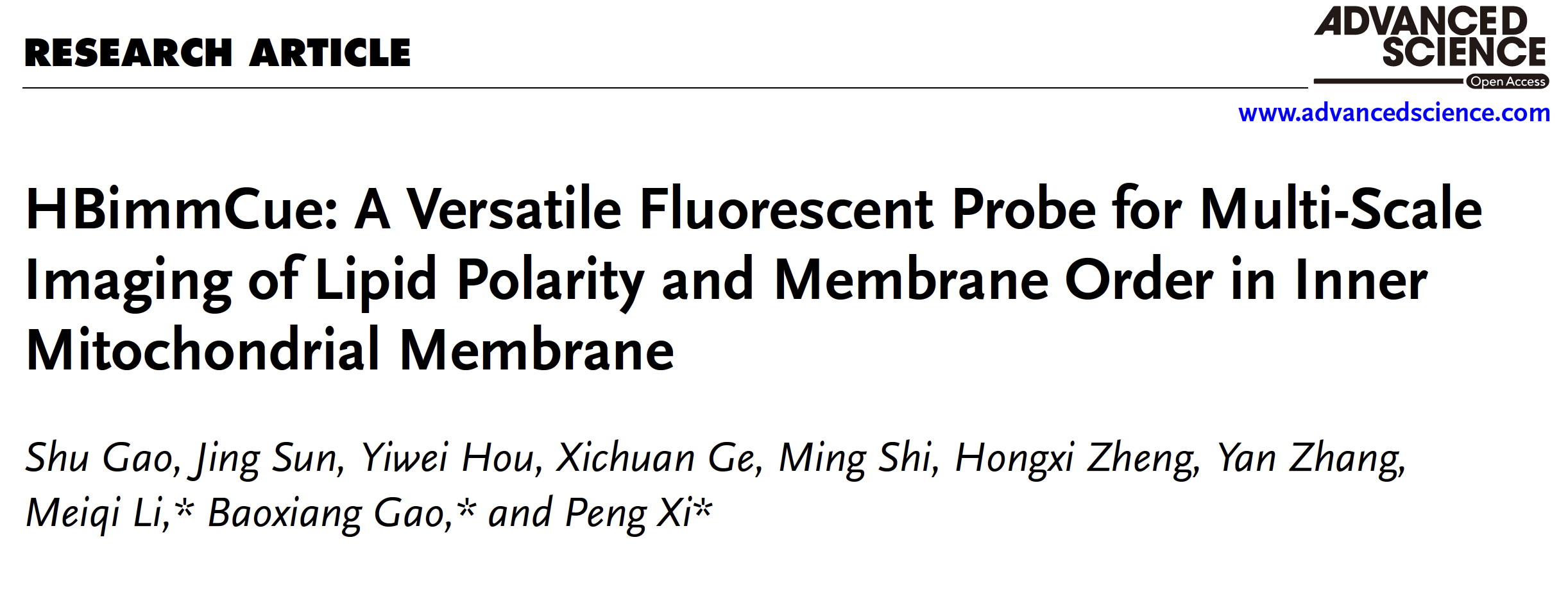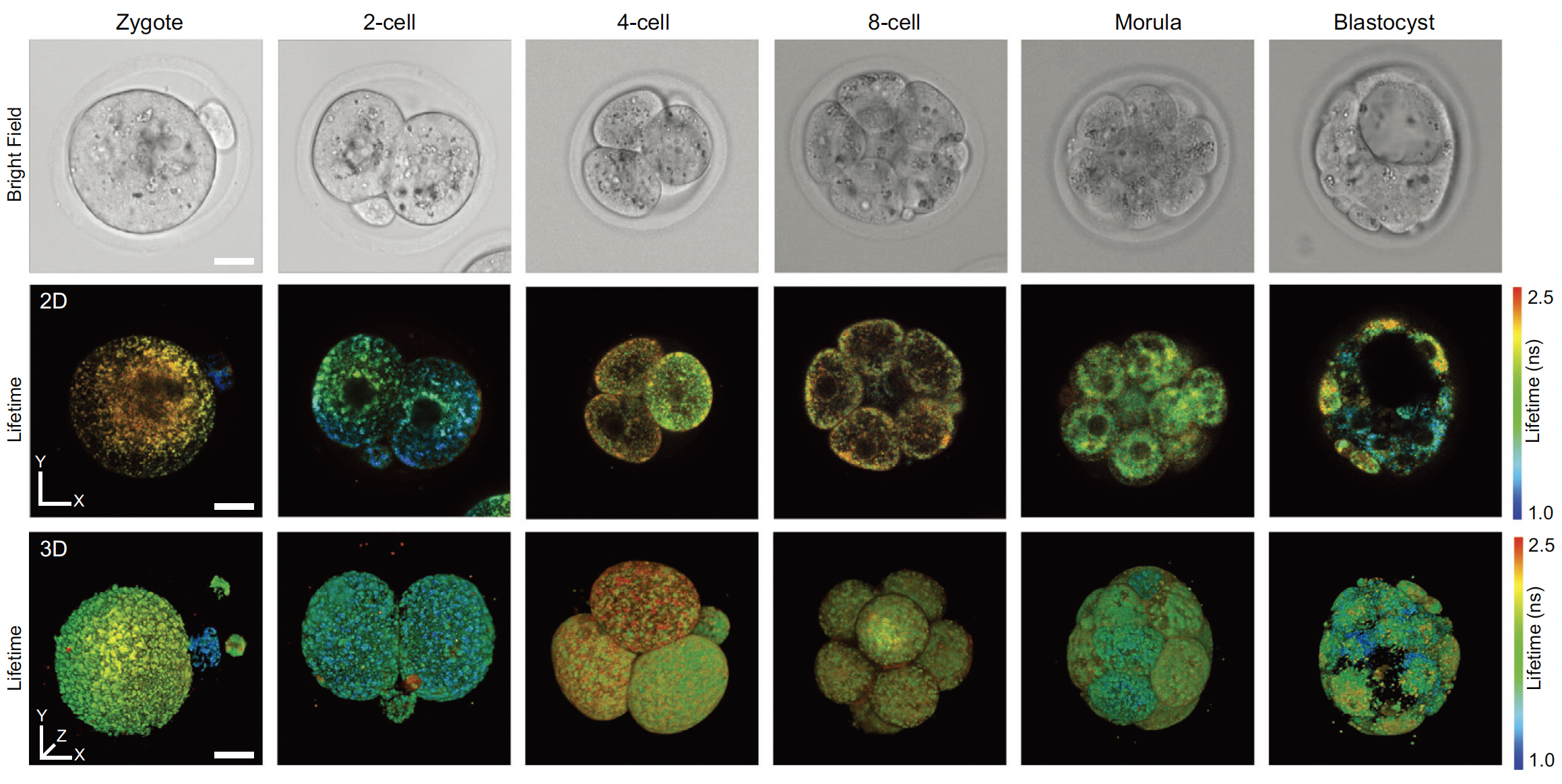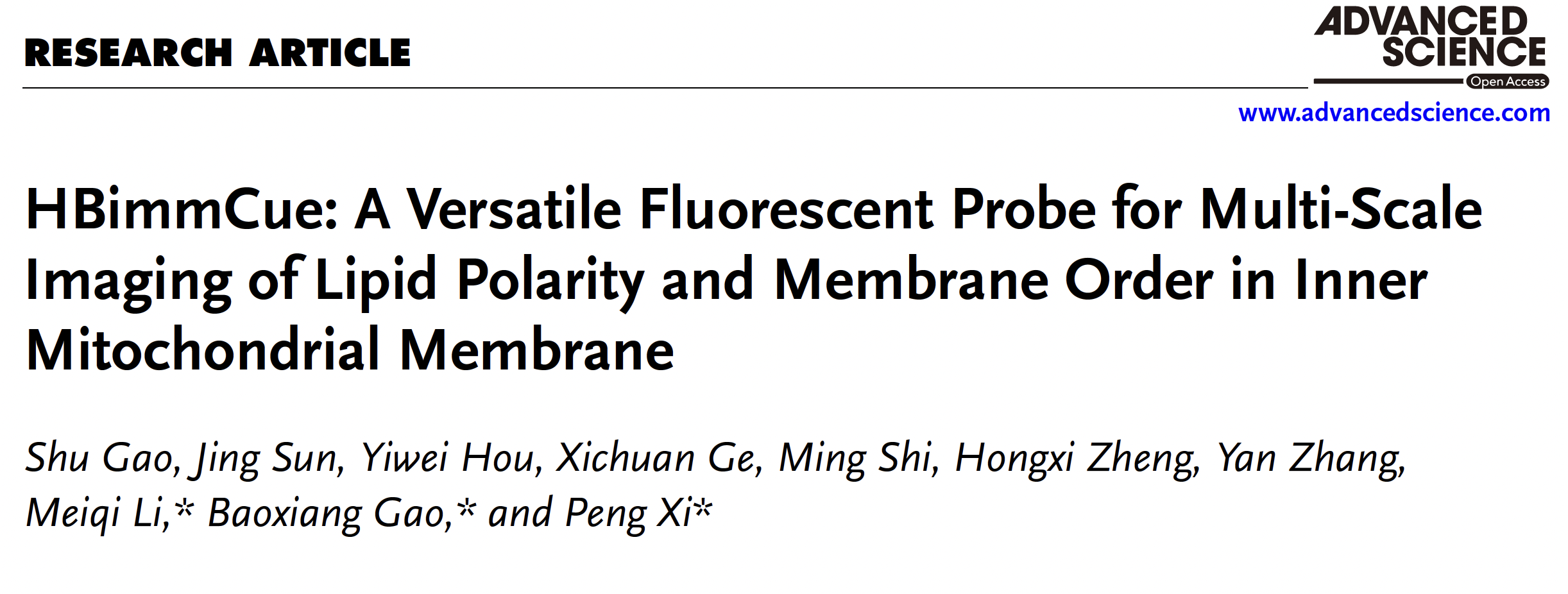Mitochondria, the powerhouses of cells, play a pivotal role in cellular metabolism and energy supply. Their function is closely linked to the lipid composition and dynamic changes of the inner mitochondrial membrane (IMM). In recent years, fluorescence imaging techniques, particularly fluorescence lifetime imaging microscopy (FLIM), have proven instrumental in studying lipid dynamics and membrane heterogeneity. However, super-resolution and cross-scale observation of the IMM microenvironment remains a significant challenge due to limitations in fluorescent probes and the optical diffraction barrier.
Recently, a study by Professor Peng Xi’s team at the Institute of Future Technology of Peking University and Professor Baoxiang Gao’s team at Hebei University, published in Advanced Science under the title "HBimmCue: A Versatile Fluorescent Probe for Multi-Scale Imaging of Lipid Polarity and Membrane Order in Inner Mitochondrial Membrane", introduces a novel near-infrared fluorescent probe, HBimmCue. This probe specifically targets IMM and reports changes in lipid polarity and membrane order via fluorescence lifetime variations, reflecting mitochondrial function and cellular respiration levels. Through multiscale imaging, the team unveiled the environmental and functional diversity of mitochondria across biological systems, laying the foundation for exploring mitochondrial dynamics in health and disease.
 Validated in vitro, HBimmCue exhibits a longer fluorescence lifetime in low-polarity, ordered membrane environments and a shorter lifetime in high-polarity, disordered environments. Moreover, HBimmCue offers excellent photostability, biocompatibility, and tissue penetrability, and is compatible with super-resolution techniques like STED and SIM.
Validated in vitro, HBimmCue exhibits a longer fluorescence lifetime in low-polarity, ordered membrane environments and a shorter lifetime in high-polarity, disordered environments. Moreover, HBimmCue offers excellent photostability, biocompatibility, and tissue penetrability, and is compatible with super-resolution techniques like STED and SIM.
Based on the excellent characters of HBimmCue, the researchers gained multiscale insights into mitochondrial environment and function.

l At Nanoscale Levels: STED-FLIM imaging revealed, for the first time, lipid polarity heterogeneity within individual IMM regions. Cristae, housing higher lipid polarity and active electron transport chains, showed shorter fluorescence lifetimes compared to the inner boundary membrane (IBM).
l At Subcellular and Cellular Levels: Mitochondria targeted for lysosomal degradation displayed longer lifetimes versus healthy ones. In neurons, shorter lifetimes in neurites versus soma suggested elevated aerobic respiration in neurite mitochondria.
l At Organism Levels: Aged oocytes in mice showed increased fluorescence lifetimes, correlating with declining oocyte quality and fertility. In preimplantation embryos, HBimmCue captured metabolic reprogramming, with lifetime variations across developmental stages linked to differentiation and metabolic demands.
Overall, HBimmCue emerges as a powerful tool for dissecting mitochondrial microenvironments and their functional implications. This breakthrough not only advances mitochondrial biology but also opens new avenues for studying metabolic disorders, neurodegenerative diseases, and reproductive health.

Authors and Funding
The study is co-corresponded by Prof. Peng Xi (Peking University), Prof. Baoxiang Gao (Hebei University), and Dr. Meiqi Li (Peking University). Shu Gao (Ph.D. candidate, Peking University) is the first author. Contributors include Jing Sun (Hebei University), Yiwei Hou (Peking University), Ming Shi (Peking University), Hongxi Zheng (Peking University), and Xichuan Ge (Beijing Airy Tech. Co.). Prof. Yan Zhang (Peking University) provided essential support to this work. The work was supported by the National Key R & D Program of China and the National Natural Science Foundation of China.
Link: https://doi.org/10.1002/advs.202414343

